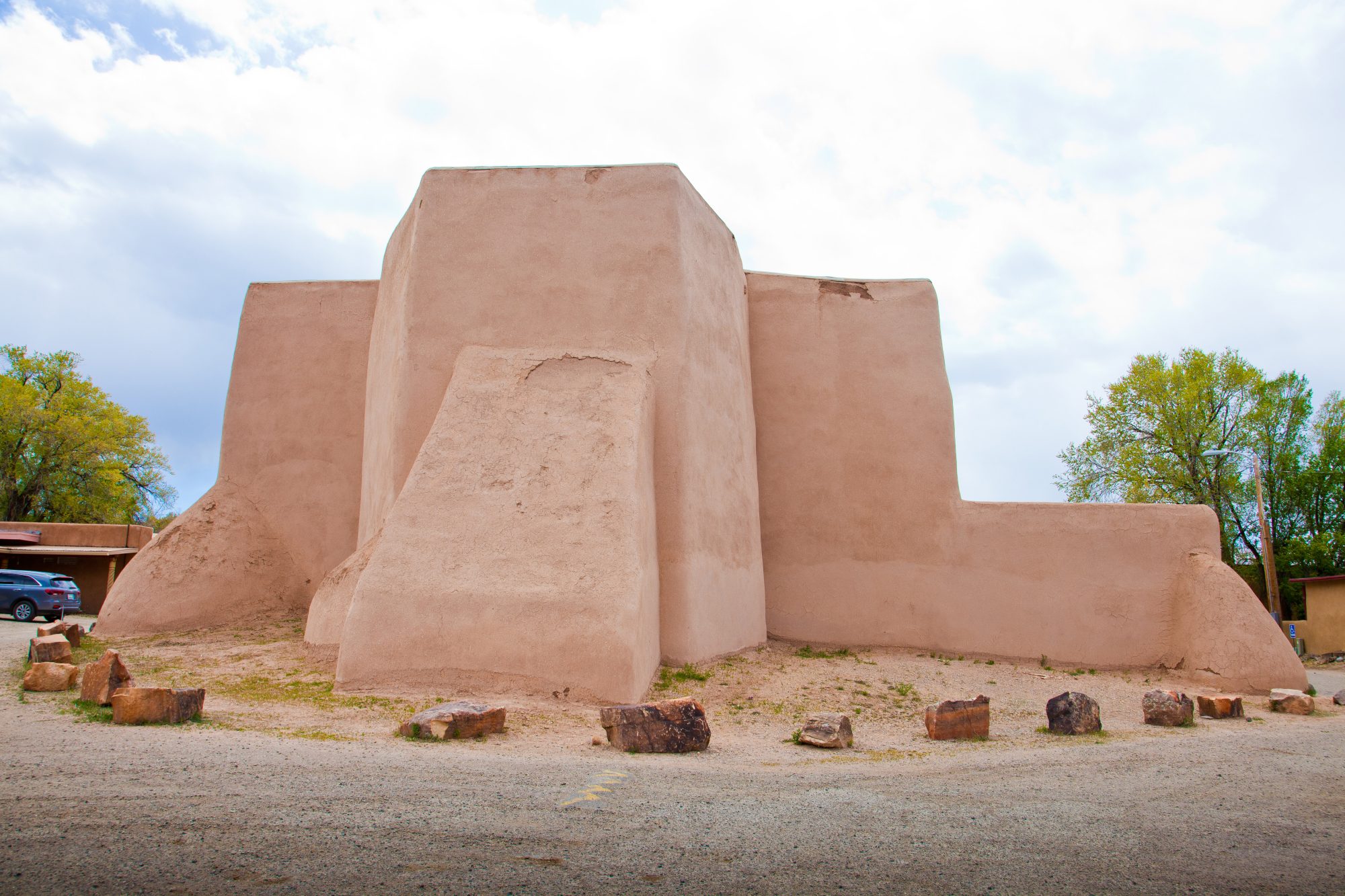En 1929, Georgia O’Keeffe se rend au Nouveau-Mexique à l’invitation de Mabel Dodge Lujan…
Voir +Elle y retourne tous les étés jusqu’à acheter une hacienda abandonnée dans le village d’Abiquiu en 1945 et s’y installer définitivement en 1946 après le décès de son mari, le photographe et galeriste Joseph Stieglitz.
Le Nouveau Mexique la séduit en même temps que ses amis photographes Paul Strand, Edward Weston et Ansel Adams rencontrés par l’entremise de Stieglitz. Ils adoptent des thèmes identiques dont les ciels et l’architecture vernaculaire témoignent de la perméabilité et de l’intimité des intentions esthétiques entre photographie et peinture au sein du groupe.
Georgia O’Keeffe consacre les étés 1929 et 1930 à l’église de San Francisco de Assisi à la mission espagnole Ranchos de Taos, un édifice de la fin du 18eme en adobe dont elle fera une série de 9 tableaux.
Adams choisit dès 1929 l’axe qu’elle surexploite : le chevet de l’église alors qu’elle ne peindra qu’une fois la façade. On peut supposer qu’elle lui fait découvrir le site et que le photographe a vu son travail. En a-t-il retenu un cadrage qu’il trouve emblématique ? Est-ce un clin d’oeil ? Est-ce une question de style? D’époque ? C’est aussi la première vision qu’a le visiteur à son arrivée. Il en va de même pour Weston. Plus exactement, Adams et lui ne tirent que le même cadrage. S’agit-il d’une sorte de compétition amicale entre eux tous ?
On peut y voir une fidélité au formalisme de la part des photographes. Ils ne s’intéressent pas à l’intérieur du bâtiment, plus commun, pour se concentrer sur son épure extérieure. On peut voir aussi avant 1932, les linéaments du groupe f64 qu’ils fonderont et après cette date, l’application de ses principes : la photo pure en tant qu’art indépendant des arts graphiques et définie par les contraintes du médium. Leur choix esthétique est la netteté par opposition au flou artistique du pictorialisme.
Seul Paul Strand exploitera des axes différents autour de l’église, à l’instar de la peintre. Son travail sur l’église de San Francisco de Assisi sera sans doute le plus proche de la démarche de Georgia O’Keeffe face à un matériau de construction sans fioritures qui parait enraciné dans le sol. Strand fera également des plans de détail comme celui du grand contrefort de l’église dont la forme austère confine à l’abstraction.
Les travaux des photographes et de la peintre rendront célèbre l’église de Ranchos de Taos.
Le rapport entre la foi de saint-Francois d’Assise et la perception du monde par la culture Pueblo est-il présent chez les photographes ? Pour Strand probablement, pour la peintre sûrement. Dans ses couleurs, ses formes et son éclairage, Georgia O’Keeffe unit l’église de Ranchos au ciel et à la terre d’une manière qui évoluera au cours des deux étés de travail, rendant le passage du sol aux murs d’adobe de plus en plus imperceptible, ancrant et élevant l’édifice vers l’espace illimité du ciel. L’église se fond avec la terre et communique avec le ciel, incarnant le mélange des croyances amérindiennes selon lesquelles dieu est en toute chose et du christianisme.
Voir –